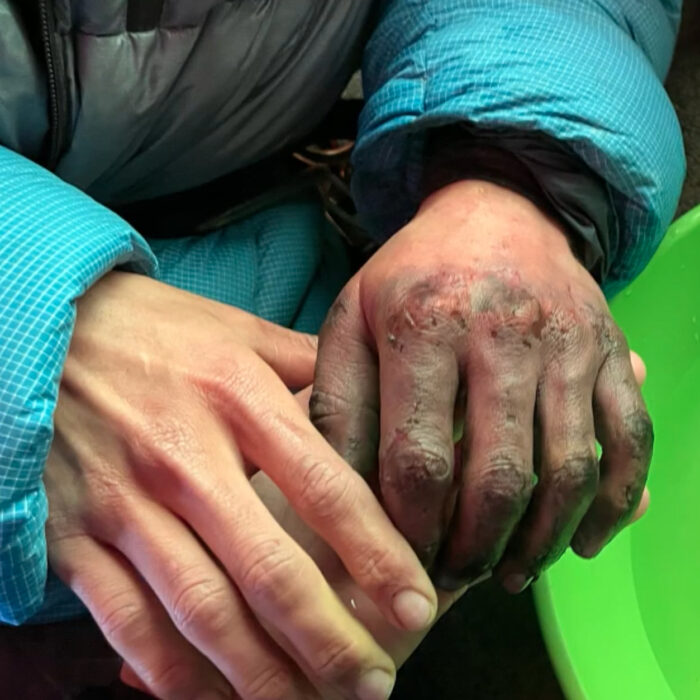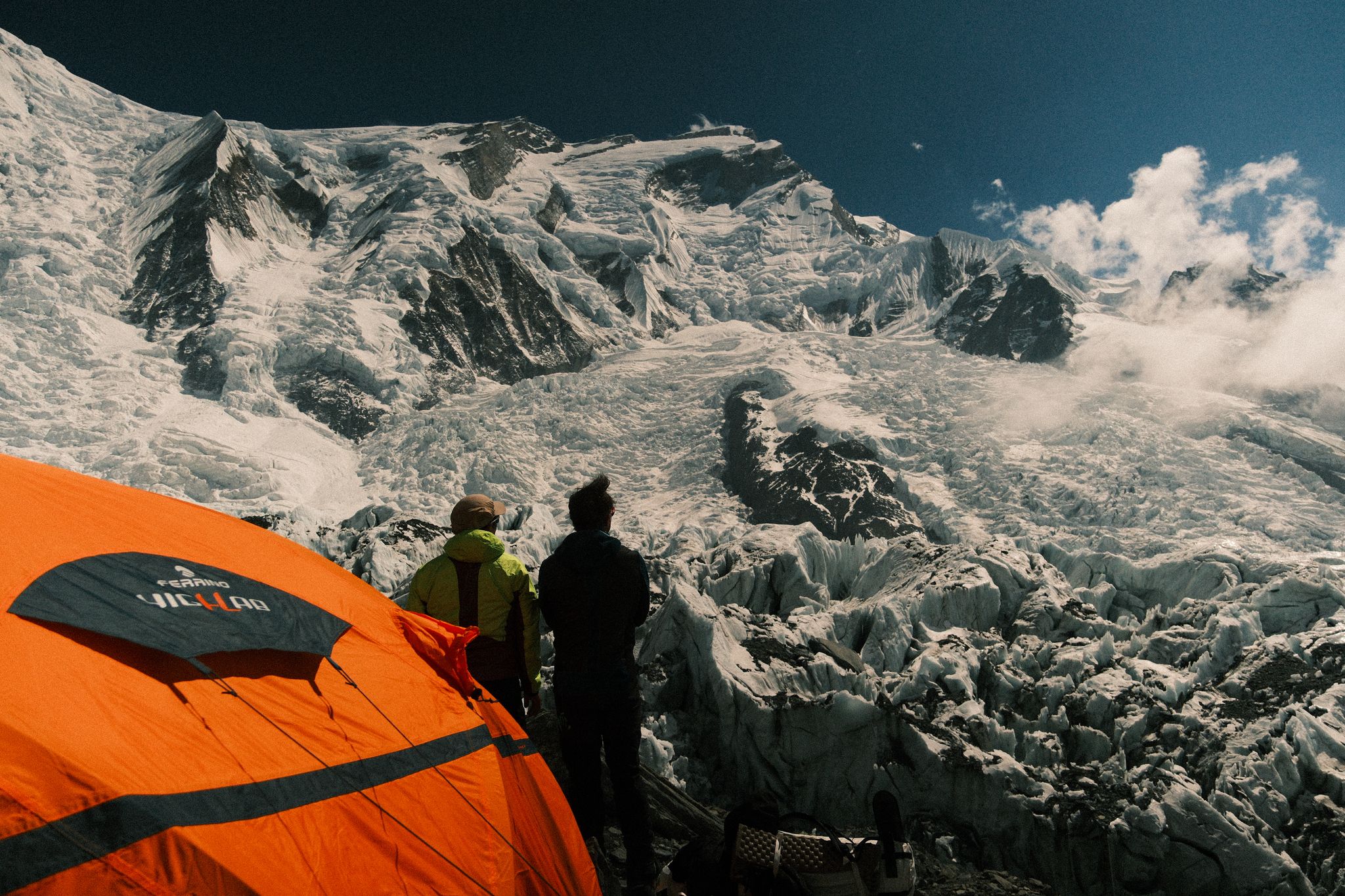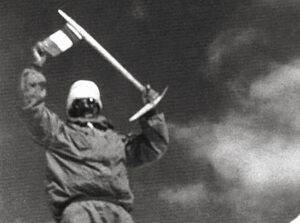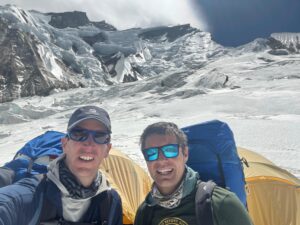Annapurna teams are preparing for a final push that will start on Friday and summit on Monday. For clients with two or more peaks in mind this season and for outfitters whose personnel are needed elsewhere, it’s time to move on.
Exceptionally dry conditions on Annapurna this year have left most of the lower slopes bare rock while sheer ice coats the upper half. This has made progress particularly demanding. Twice, the lead Sherpa team had to fix so much rope around the seracs and open crevasses that they ran out and had to turn back.
Last Sunday, Annapurna had its first serious accident of the season. Speed climber Vadim Druelle of France fell into a crevasse. Fortunately, he was rescued and flown to Base Camp in a long-line operation, bruised and with a badly frostbitten hand.

Vadim Druelle’s frostbitten hand. Frame of Roman Romancini’s video
The lack of snow means fewer avalanches, but fewer doesn’t mean none. Climbers in Base Camp witnessed a big one yesterday:
Minimal acclimatization
Teams have been acclimatizing over the last few days. They went up to Camp 2 for a couple of nights, then either tagged or spent an extra night in Camp 3. For most, that is enough preparation.
“A light snowfall is expected on Friday, with temperatures dropping as low as -34°C,” 14 Peaks Expedition reported. “After Friday, the weather is expected to improve, with less wind in the following days.”
That should be all they need.
A video of a meeting shared by climber Roman Romancini of Brazil (see below) reveals that the summit push starts tomorrow (Friday in Nepal) for most of the 30 climbers with Seven Summit Treks. Other groups will likely join them. They will advance at a rate of one camp per day, reaching Camp 1 on Friday, Camp 2 on Saturday, Camp 3 on Sunday, and summiting on Monday, April 7.
It has become the norm in recent years not to pitch a Camp 4, and that is the plan again this season. Instead, most climbers will use supplementary oxygen, at least on the long summit day. During that marathon, they will go from Camp 3 along the long summit ridge to the top, then return to Camp 3, Camp 2, or even Base Camp if they have the energy.
Imagine Nepal’s rope fixers are expected to finally open the route to the summit this weekend. It is not yet confirmed whether they have already left Base Camp and resumed work on the mountain.
Here’s a video from the Seven Summit Treks Base Camp of the briefing on summit push plans.






